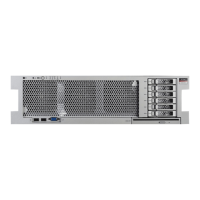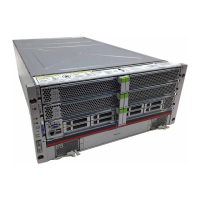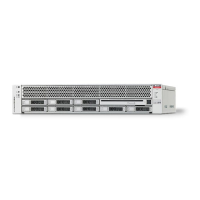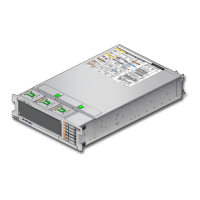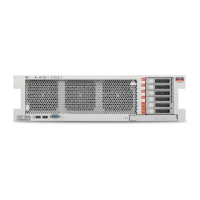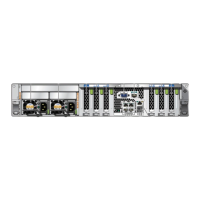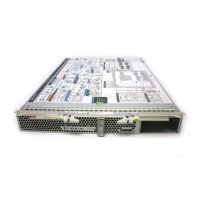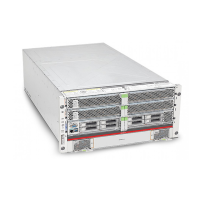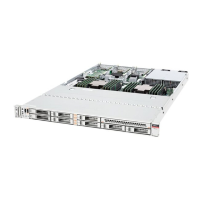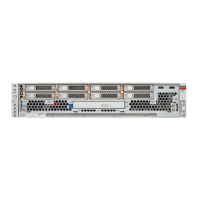Check for Faults
Detecting and Managing Faults 43
faultmgmtsp>
In this example, a fault is displayed that includes these details:
■
Date and time of the fault (2012-08-27/19:46:26).
■
UUID (4e16c8d-5cdb-c6ca-c949-e24d3637ef27), which is unique to each fault.
■
Message identifier (PCIEX-8000-8R), which can be used to obtain additional
fault information from Knowledge Base articles.
3.
Consider your next step:
■
If you are checking for faults while adding additional processor
modules, and no faults were detected, return to Broken Link (Target ID:
Z40019D01512366).
■
If a fault is detected, proceed to Step 4.
4.
Use the message ID to obtain more information about this type of fault.
a.
Obtain the message ID from console output.
b.
Go to https://support.oracle.com, and search on the message ID in the
Knowledge tab.
5.
Follow the suggested actions to repair the fault.
6.
Determine your next step.
■
If you found a fault that must be removed manually, go to “Clear a Fault” on page 44.
■
If you are upgrading the server and found no faults, return to “Server Upgrade
Process” on page 59.
Related Information
■
“PSH Overview” on page 41
■
“Clear a Fault” on page 44
■
“Server Upgrade Process” on page 59
